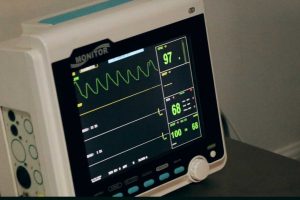New trials show promising, minimally invasive procedure to treat resistant hypertension


Hypertension remains poorly controlled worldwide and is becoming more common. Lifestyle changes and blood pressure-reducing drugs are the mainstays of therapy for hypertension, but despite widespread availability of these approaches, many patients with hypertension are not adequately treated. Those with uncontrolled hypertension are at increased risk of heart attack, heart failure, kidney disease and stroke.
A recent study published in JAMA demonstrates the effectiveness of a procedure done under the skin, similar to placing a stent, to treat uncontrolled hypertension, or blood pressure that cannot be controlled despite the use of blood pressure control drugs and agents. This minimally invasive procedure uses ultrasound energy delivered through a small balloon to denervate, or cut off the nerve supply of, the renal artery (RDN), or the main blood vessel that supplies blood to a kidney. Renal Denervation is used alone or as a supplement to blood pressure medication and targets the overactive kidney nerves. This was a randomized, clinical trial with 224 patients with uncontrolled hypertension. The trial was co-authored by Stephen Jenkins, MD, FACC, FSCAI, FSVM, the Section Head of Interventional Cardiology and the Director of Interventional Cardiology Research at Ochsner Health.
“Ochsner Hospital participated in the RADIANCE-HTN series of trials which studied the effect of ultrasound renal-denervation in resistant, hypertensive patients,” Dr. Jenkins said. “In this pivotal, randomized, multinational trial, Ochsner Hospital was the number 2 enroller in the United States. This simple catheter-based procedure offers an alternative to drug treatment for hypertension by reducing sympathetic nerve activity to arteries which precipitates high blood pressure.”
In addition to lifestyle changes and pharmacotherapy, endovascular catheter-based renal denervation (RDN), a minimally invasive procedure that involves a small incision, has emerged as treatment for resistant hypertension. The traditional RDN procedure uses radiofrequency ablation to burn the nerves in the renal arteries, leading to the kidneys. This process causes a reduction in the nerve activity, which decreases blood pressure.
The uRDN system, a minimally invasive procedure to treat overactive nerves is performed by inserting a small flexible catheter through a small puncture in the wrist or groin. The catheter is then placed in the artery supplying the kidney. Either radiofrequency or ultrasound energy is delivered to the tissue surrounding the artery for several seconds which decreases nerve activity and decreases blood pressure. The device is removed after both kidneys are treated during the procedure.
Two sham-controlled trials previously demonstrated that ultrasound renal denervation (uRDN) decreases blood pressure (BP) in patients with mild-moderate and resistant hypertension. This larger, pivotal trial done in patients with uncontrolled hypertension expanded upon these efficacy and safety observations.
In the Radiance II trial, co-authored by Jenkins, demonstrated positive results even for those with uncontrolled hypertension, with lower blood pressure sustained two months after treatment. This means uRDN is an alternative to medical therapy, effective BP-lowering therapy for hypertensive patients.
In addition, pooled analysis results from the RADIANCE SOLO, RADIANCE TRIO, and RADIANCE II were concurrently published in JAMA Cardiology. Analysis included data from more than 500 patients with mild-moderate to resistant hypertension randomized in the three studies. Results of the pooled analysis showed a consistent blood pressure lowering effect across a broad range of hypertension.
More information:
Michel Azizi et al, Endovascular Ultrasound Renal Denervation to Treat Hypertension, JAMA (2023). DOI: 10.1001/jama.2023.0713
Ajay J. Kirtane et al, Patient-Level Pooled Analysis of Ultrasound Renal Denervation in the Sham-Controlled RADIANCE II, RADIANCE-HTN SOLO, and RADIANCE-HTN TRIO Trials, JAMA Cardiology (2023). DOI: 10.1001/jamacardio.2023.0338
Journal information:
Journal of the American Medical Association
,
JAMA Cardiology
Source: Read Full Article




